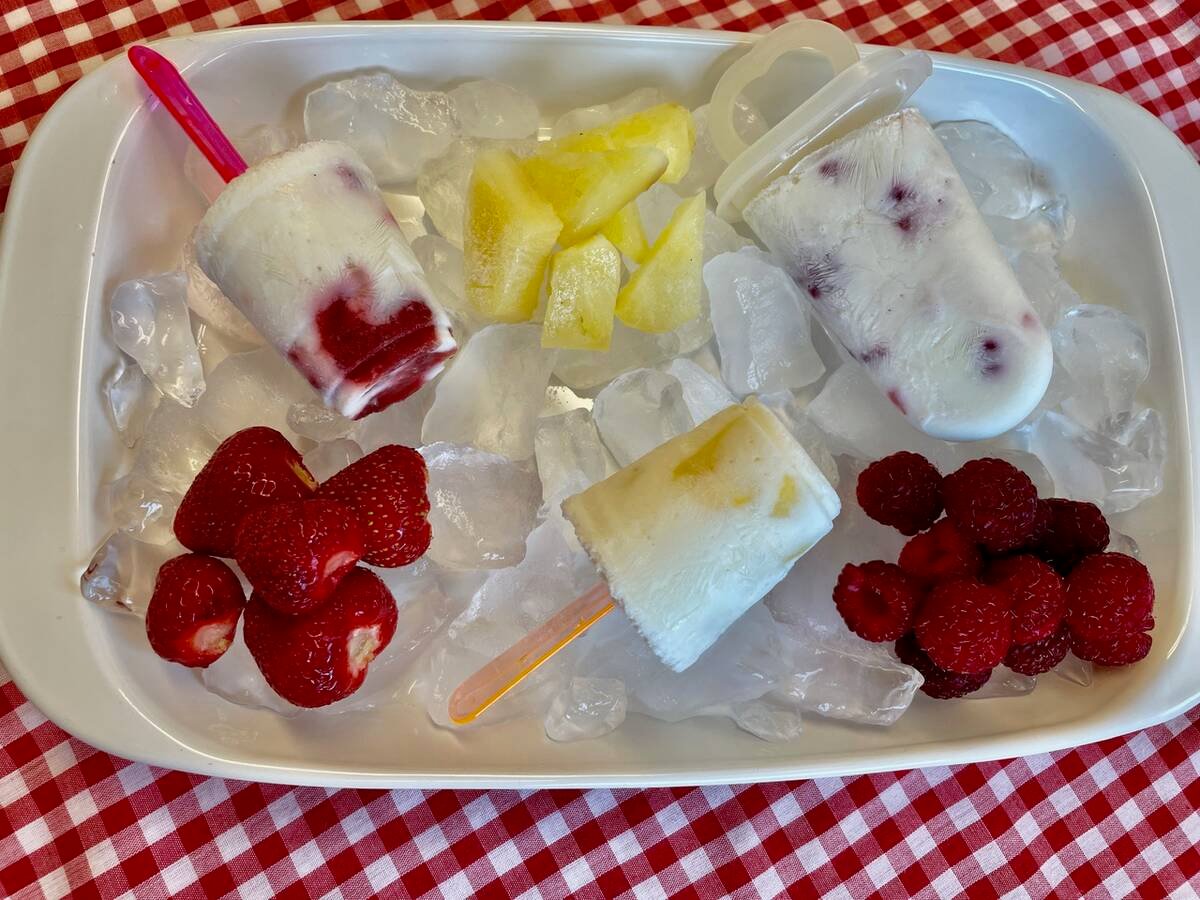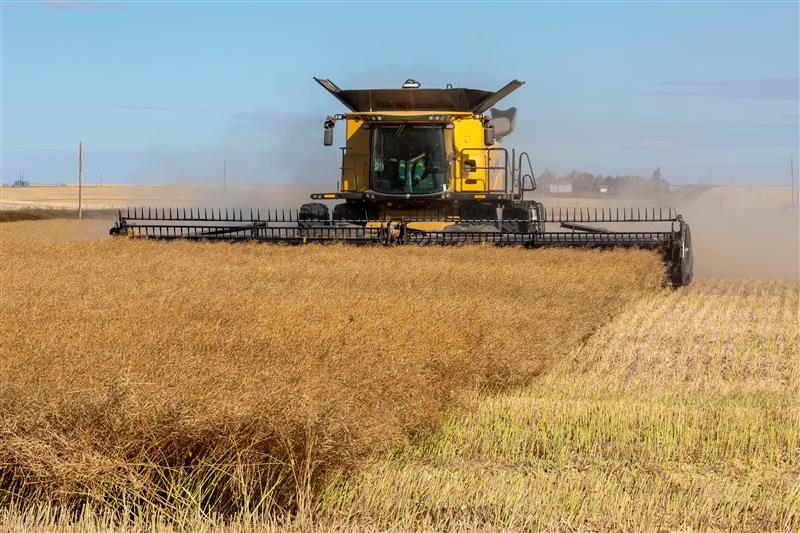Along with many other football fans, we travelled to Regina for the Grey Cup and enjoyed every minute of it. There is a sense of accomplishment to have braved the cool temperatures for this Canadian event.
Freezer rhubarb-strawberry jelly
Dear TEAM: I am looking for a freezer rhubarb-strawberry jelly. Someone gave my daughter-in-law some and it was so good. I would like to try and make some as gifts for Christmas. – E.R., e-mail.
Dear E.R.: Many fruits, including rhubarb, can be frozen in the summer and made into jam or jelly during the fall and winter months.
Read Also

Food can play a flavourful role in fun summer activities
Recipes – popsicles are made with lactose-free milk and yogurt so are perfect for those who can’t tolerate milk, while everyoneelse will also enjoy them
Accurate measurements are important in jam and jelly making. Some fruits, after being frozen, tend to collapse on thawing and that makes it difficult to measure the fruit accurately. For this reason it is wise to measure quantities of fresh fruit before freezing and then mark the measure on the carton. Do not add any sugar to fruit that is being frozen for jam or jelly making.
When making jam or jelly from frozen fruit, thaw the fruit until only a few ice crystals remain. Then follow the general directions given for your recipe, using the same proportions of fruit (measured before freezing) and other ingredients.
Fruit juices can also be frozen and later made into jelly.
Strawberry-rhubarb jelly
Yield: Seven 250 mL jars.
11/2 pounds red rhubarb 750 g
1 1/2 quarts strawberries 1.5 L
1/2 teaspoon butter or 2 mL
margarine, to reduce
foaming
6 cups sugar 1.5 L
2 pouches liquid pectin
Wash and cut rhubarb into one inch (2.5 cm) pieces. Blend or grind unless you are using frozen rhubarb. Wash, stem and crush strawberries, one layer at a time, in a saucepan.
Place both fruits in a jelly bag or double layer of cheesecloth and gently squeeze out juice.
Measure 31/2 cups (875 mL) of juice into a large saucepan. Add butter and sugar, thoroughly mixing into juice.
Bring to a boil over high heat, stirring constantly. Immediately stir in pectin. Bring to a full rolling boil and boil one minute, stirring constantly.
Remove from heat, quickly skim off foam and fill sterile jars, leaving 1/4 inch (0.5 cm) headspace. Centre snap lids, apply screw bands until fingertip tight and place jars in canner.
Process in boiling-water canner. Processing time at altitudes of zero to 1,000 feet, five minutes.; 1,001-6,000 feet, 10 minutes; above 6,000 feet, 15 minutes.
Source: RecipeSource & USDA Agriculture Information Bulletin No. 539.
Magic Mill instructions
Dear TEAM: I have recently acquired a Magic Mill DXL 9000 Kitchen Machine made in Sweden and need an instruction book so I can maximize its usefulness. Does anyone have information as to where an instruction book could be obtained? – Margaret, e-mail.
Dear Margaret: Contact Magic Mill International Headquarters, 382 Rt. 59 section 338, Monsey, N.Y. 10952, U.S.A., phone 845-368-2532, fax 845-368-2533 or e-mail contact@magicmillusa.com.
Kids in the kitchen
A program called Kids In The Kitchen has been well received in our schools. It is a six week course that takes students through the basics of cooking and working in the kitchen. Students and their volunteer leaders meet once a week after school for approximately two hours. This year it was offered to Grade 5 and 6 boys and girls. Donations from the community provided funds for the supplies.
I was involved in leading the course for one week. My week was about the safe handling of ground meat, knives and a barbecue. Each student made two hamburger patties that they barbecued.
As a group they also made a Caesar salad. I found this an easy-to-make recipe.
Caesar salad
1/3 cup mayonnaise 75 mL
2 tablespoons lemon 30 mL
juice
1 tablespoon 15 mL
Worcestershire sauce
1 teaspoon Dijon 5 mL
mustard
1/4 teaspoon pepper 1 mL
dash of Louisiana, Tabasco
or other hot sauce
1 clove garlic, minced or 1/4
teaspoon (1 mL) garlic
powder
1/4 cup oil (olive, canola 50 mL
or other vegetable oil)
1/2 cup sour cream 125 mL
1/4 cup parmesan, 50 mL
cheese, grated
1 head of romaine lettuce
bacon bits and croutons
Mix mayonnaise, lemon juice, Worcestershire sauce, mustard, pepper, hot sauce and garlic together. Pour in the oil. Slowly stir in sour cream and parmesan cheese. Pour over lettuce. Sprinkle bacon bits and croutons on top before serving.
This recipe made more than a generous amount of dressing. Use the amount you like and save the rest in the refrigerator for another Caesar salad.
Source: Golden Touch, Blue Cross MSI Cookbook, 1996.
To start a Kids In The Kitchen Program or to see if similar programs are being provided in your area, contact your local nutritionist.
Knotted flannel blanket
In one evening you can make a cozy blanket. The only sewing is on one end so there will not be knots next to your face. You can tie knots all around if you wish and not have any sewing.
Go to the store and pick out two pieces of matching flannel, one for the front and one for the back of the blanket. When I made mine I chose a patterned flannel with pinks and greys for the front and a plain pink for the back. You could have two patterned pieces, but both sides show in the knots so the patterns should have complementary colours.
The length of fabric to buy will depend on the size of blanket you wish to make. For an adult size, two metres is about right. Less is needed for a child or baby. The finished width of the blanket will be the width of the flannel on the bolt. Trim the selvage if it is thick or lumpy.
With right sides together, sew a seam along the top side. Turn and press.
With the two layers laying flat on one another, make six inch (15 cm) cuts into the two layers of flannel, every 11/2 inches (3.5 cm) all around the three sides of the blanket. A quilting board and rotary cutter work well.
Holding both layers of the cut six inch (15 cm) strips together, tie knots. Your blanket is complete.
Safer cutting board
In recent years studies have fuelled a debate about whether plastic or wooden cutting boards are safer. The bottom line: either kind of board is OK so long as you keep it clean.
Whether you use wood or plastic for cutting raw meat and poultry, scrub the board well afterward with hot, soapy water and don’t forget to wash the knife and your hands thoroughly as well. If the surface has fat on it, or if the plastic is deeply scarred, it’s especially important to get it clean. Unlike wood boards, plastic has the advantage of being dishwasher-safe. You can also sanitize a board by rinsing it with one teaspoon/five mL bleach in one quart/one L of water.
Source: University of California, Berkeley Newsletter, November 2003.
Our cookbook contest
Don’t forget to send your name and address to the Team cookbook draw by Dec. 10. See the address at the bottom of the column.
Taste Saskatchewan recipe contest
Share your best pulse dish. You could win a weekend getaway. Enter by Dec. 15. Don’t forget to include a few notes about yourself and why this is your favourite pulse dish.
Contest details:
- Recipe must incorporate a minimum of 250 mL (1 cup) of pulses.
- Recipes should be original.
- All recipes submitted become the property of Saskatchewan Pulse Growers. All recipes submitted may be published in subsequent magazines, cookbooks or websites.
- Each recipe submitted must include the entrant’s name, address and phone number. Contestants may enter more than one recipe, but please include name, address and phone number on each recipe.
- Finalist will be contacted by Jan. 2. Recipes will be prepared on finalists’ behalf. Finalist will present recipe before judges on Jan. 13.
Send recipes to: Food Focus Sask-atoon Inc., A5A – 116 – 103rd St. E., Saskatoon, Sask. S7N 1Y7, phone 306-652-2691, fax 306-664-4404, e-mail foodfocus@quadrant.net.
Alma Copeland is a home economist from Rosetown, Sask., and one of four columnists comprising Team Resources. Send correspondence in care of this newspaper, Box 2500, Saskatoon, Sask., S7K 2C4 or contact them at team@producer.com.
















